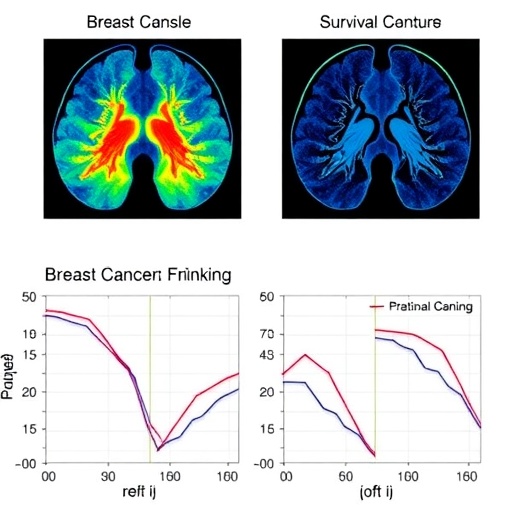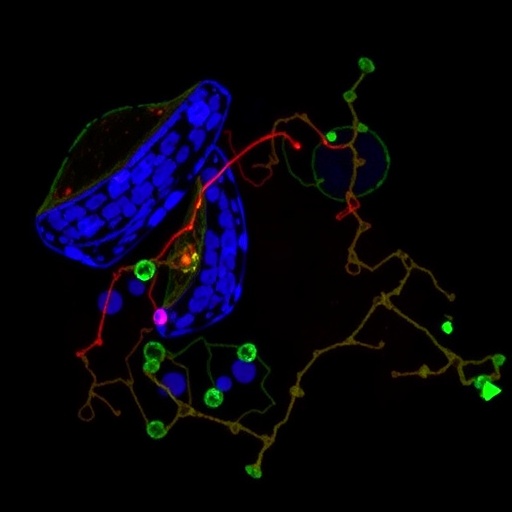As the global population ages at an unprecedented rate, societies worldwide face profound challenges in addressing the increasing burden of age-related diseases and conditions. Particularly striking is the demographic transformation in China, where the number of individuals aged 60 and above is surging rapidly due to decades of socio-economic development and enhanced healthcare. This demographic shift is exerting immense pressure on healthcare infrastructure and social services, spotlighting the critical need for advanced tools to assess and manage biological aging accurately. Responding to this urgency, the Aging Biomarker Consortium (ABC) has embarked on an ambitious initiative known as the X-Age Project, aiming to construct a comprehensive and culturally tailored aging evaluation system that reflects the unique epidemiological and genetic characteristics of the Chinese population.
The X-Age Project is underpinned by the recognition that chronological age alone cannot fully represent the heterogeneity seen in aging processes among individuals. Biological age — a composite measure encompassing molecular, physiological, and functional parameters — offers a more nuanced portrait of an individual’s true position along the aging continuum. However, existing biological aging clocks and biomarkers, primarily developed and validated in Western populations, may not capture the intricate biological and environmental interplay operative in diverse Chinese cohorts. This gap necessitates the development of new, population-specific aging clocks that harness multi-omic data to deliver precise biological age estimations and enable early detection of accelerated aging.
Central to the X-Age Project’s methodological framework is the recruitment of large, longitudinal cohorts representative of China’s vast and heterogeneous population. By aligning recruitment strategies with epidemiological distributions and demographic variables, ABC investigators aim to map aging trajectories across varied genetic backgrounds, lifestyles, and environmental exposures. Standardized protocols for sample collection are rigorously implemented to minimize variability and facilitate reproducibility. This includes blood draws for multi-omics analyses, physiological assessments, and careful documentation of clinical and lifestyle factors, collectively forming a rich database that supports robust modeling and validation of aging biomarkers.
One of the distinguishing pillars of the X-Age Project is its multimodal data acquisition approach, integrating genomics, epigenomics, transcriptomics, proteomics, metabolomics, and imaging data to grasp the multifaceted nature of aging. By leveraging cutting-edge high-throughput technologies and machine learning algorithms, the project endeavors to unravel the complex interplay of molecular pathways implicated in aging. This integrative strategy not only enhances the sensitivity and specificity of the derived aging clocks but also uncovers novel biological signatures that may escape detection through unimodal analyses. Such a comprehensive approach propels the field beyond traditional biomarker discovery into the realm of predictive and personalized aging analytics.
The construction of composite aging clocks within the X-Age Project is a formidable computational challenge. The team employs advanced statistical methods and artificial intelligence frameworks to harmonize heterogeneous data streams, reduce dimensionality, and identify the most informative features indicative of biological age. These models are iteratively refined using cross-validation within and across cohorts to ensure generalizability and resilience to batch effects or confounders. Importantly, the clocks are calibrated against a spectrum of functional health outcomes, including cognitive function, physical performance, and incidence of age-related pathologies, thereby embedding clinical relevance into the molecular readouts.
By developing robust, scalable biological aging clocks tailored to the Chinese population, the X-Age Project promises transformative applications in clinical and public health settings. Such tools can enable clinicians to identify individuals at risk of premature aging and age-associated diseases long before phenotypic manifestations emerge, facilitating timely intervention. Public health authorities may also leverage these biomarkers to monitor population health trends and evaluate the efficacy of aging-targeted therapies or lifestyle programs. Moreover, the project’s platform offers an invaluable resource for future research, fostering a deeper understanding of aging heterogeneity and resilience factors unique to East Asian populations.
Beyond biomarker discovery and clock construction, the X-Age Project represents a paradigm shift in aging research that embraces interdisciplinary collaboration. The consortium bridges expertise across molecular biology, epidemiology, data science, clinical medicine, and bioinformatics, creating an ecosystem conducive to innovation. Such integration accelerates the translation of basic aging biology into actionable insights and practical tools. The project’s open data-sharing policies and standardized workflows also facilitate broader participation and replication, addressing concerns about reproducibility and ethnic inclusivity that have historically limited aging research applicability.
The implementation phase of the X-Age Project carefully considers the ethical and social implications surrounding aging biomarker research. Issues related to privacy, informed consent, potential stigmatization, and equitable access to aging assessments are being rigorously addressed through community engagement and regulatory compliance. Particularly for elderly populations, the project emphasizes culturally sensitive communication and capacity-building to ensure that the benefits of aging research are disseminated justly. Such attention to the human dimension reinforces the project’s commitment to responsible innovation in biomedicine.
As biological age clocks become validated and integrated into clinical practice, the next frontier lies in coupling these tools with interventions designed to modulate aging trajectories. The X-Age Project lays groundwork for future clinical trials investigating pharmaceutical, nutritional, or lifestyle modifications targeted at decelerating biological aging or reversing its detrimental effects. By providing reliable biomarkers, the project enhances the capacity to evaluate efficacy and personalize therapies, thereby catalyzing the development of precision geroscience tailored for the Chinese context. This could profoundly reshape approaches to healthy aging and chronic disease management in the coming decades.
Technological advances in single-cell omics and wearable health monitoring devices are anticipated to further enrich the X-Age Project’s data reservoir. Incorporating real-time physiological data and cell-specific molecular profiles may soon enable dynamic tracking of biological aging rather than static snapshots. This temporal dimension adds another layer of complexity, offering possibilities for early-warning systems and adaptive health interventions. The project’s modular design ensures adaptability to incorporate emerging technologies, underscoring its role as a living research platform responsive to scientific progress.
The significance of the X-Age Project extends beyond China, offering a scalable blueprint for aging research in other underrepresented populations worldwide. The increased diversity in aging biomarker development seeds greater equity in biomedical research and clinical care, mitigating biases that limit generalizability. Furthermore, cross-population comparisons may elucidate conserved and divergent mechanisms of aging, enriching global understanding. Such knowledge exchange aligns with the aspirations of international consortia promoting collaborative aging research and innovation across geopolitical boundaries.
In conclusion, the X-Age Project represents a pioneering effort to decode the complex biology of aging within a demographically critical population. By harmonizing robust cohort design, multimodal data acquisition, sophisticated modeling, and ethical stewardship, the initiative is poised to revolutionize how biological aging is measured, understood, and managed. As aging populations challenge healthcare systems and economies worldwide, projects like X-Age offer hope for precision tools that can enhance healthspan, inform policy, and inspire a new generation of aging science tailored to diverse human experiences.
The vision envisaged through the X-Age Project epitomizes a fusion of cutting-edge science and public health imperatives, embodying the promise to unlock aging’s mysteries with unprecedented clarity. Its successful implementation will establish new standards in biomarker research, catalyze therapeutic innovation, and ultimately contribute to a future where aging is not merely endured but actively managed with scientific precision. This milestone underscores the imperative and potential of personalized aging clocks as vital instruments in the quest for healthy longevity among China’s rapidly aging population and beyond.
Subject of Research: Development of biological aging biomarkers and composite aging clocks tailored to the Chinese population using multimodal omics data.
Article Title: The X-Age Project to construct a Chinese aging clock.
Article References:
Li, J., Jiang, M., Wang, Q. et al. The X-Age Project to construct a Chinese aging clock. Nat Aging (2025). https://doi.org/10.1038/s43587-025-00935-w
Image Credits: AI Generated




